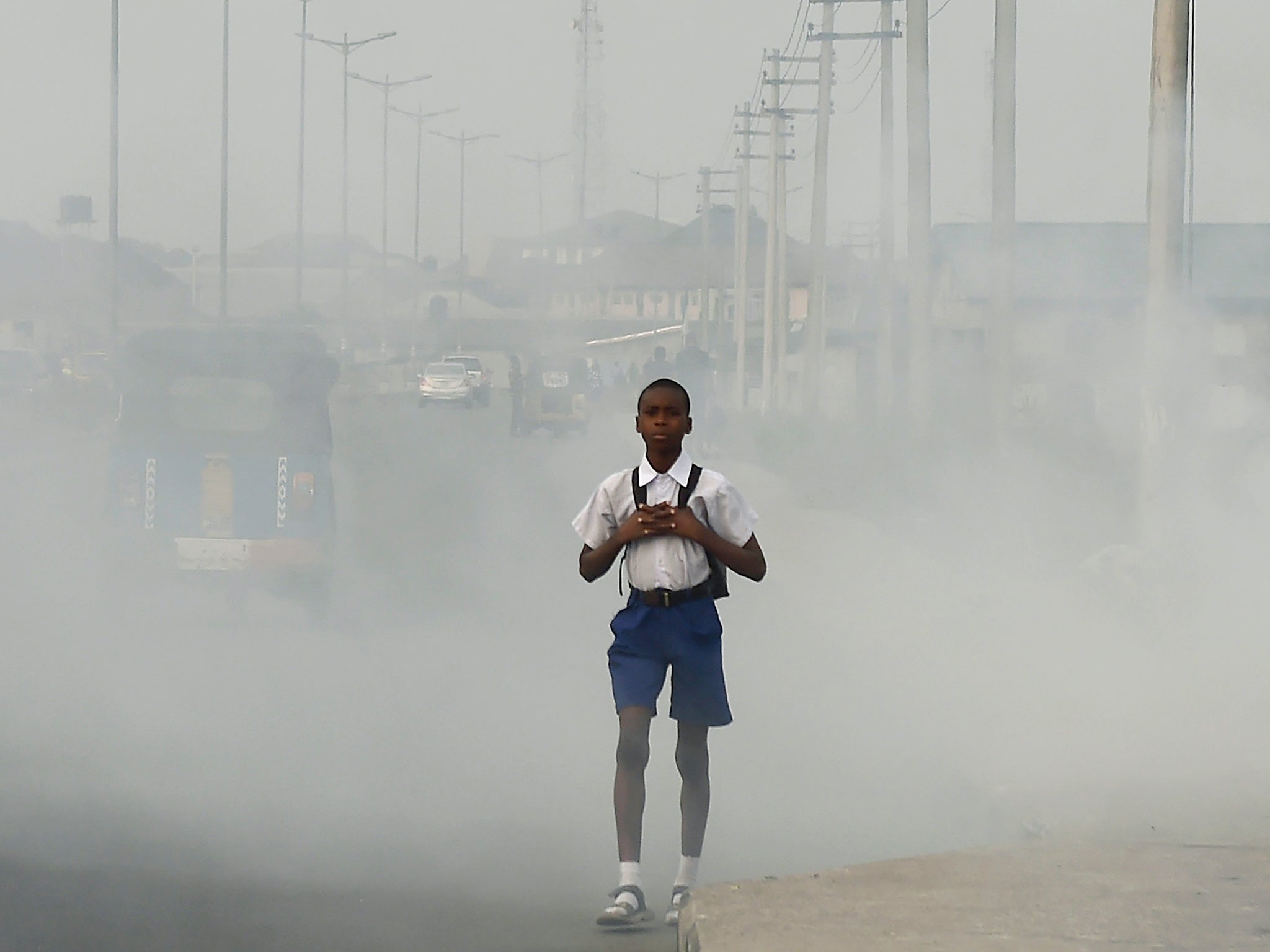Nearly two million children die every year because of pollution and unhealthy environment
‘A polluted environment is a deadly one – particularly for young children'

Your support helps us to tell the story
From reproductive rights to climate change to Big Tech, The Independent is on the ground when the story is developing. Whether it's investigating the financials of Elon Musk's pro-Trump PAC or producing our latest documentary, 'The A Word', which shines a light on the American women fighting for reproductive rights, we know how important it is to parse out the facts from the messaging.
At such a critical moment in US history, we need reporters on the ground. Your donation allows us to keep sending journalists to speak to both sides of the story.
The Independent is trusted by Americans across the entire political spectrum. And unlike many other quality news outlets, we choose not to lock Americans out of our reporting and analysis with paywalls. We believe quality journalism should be available to everyone, paid for by those who can afford it.
Your support makes all the difference.The deaths of more than one in four young children are caused by pollution, lack of sanitation and other unhealthy environments, the World Health Organisation has warned.
About 1.7 million children under the age of five die every year as a result of respiratory infections attributed to air pollution, second-hand smoke, poor access to clean water, poisoning and other environmental problems.
Children exposed to air pollution have a greater risk of developing pneumonia while young and will have a higher chance of getting chronic respiratory diseases like asthma throughout their life.
Dr Margaret Chan, the WHO’s Director-General, said: “A polluted environment is a deadly one – particularly for young children.
“Their developing organs and immune systems, and smaller bodies and airways, make them especially vulnerable to dirty air and water.”
In a report called Inheriting a Sustainable World?, the WHO said the number of children under five whose lives could have been saved was a “shocking missed opportunity”.
It found that 531,000 children lost their lives as a result of household air pollution, chronic respiratory infections, lung disease, cancer and other health effects.
In 2012, some 361,000 children also died from diarrhoea that could have been prevented if they had had access to clean water.
Vector-borne diseases, such as malaria, could also be reduced by environmental action, such as reducing the places where mosquitoes can breed.
“Another category of threat to children’s health is emerging environmental hazards, including chemicals, electronic waste and climate change,” the report said.
“The toxicity of many chemicals in common use is not well understood. The regulatory requirements for chemicals, where safety testing must be conducted by manufacturers and the results assessed by regulators, may be limited for some types and uses of chemicals.
“Chemicals from pesticides, plastics, and other manufactured goods, as well as from environmental contamination, eventually find their way into the food chain. These include arsenic, fluoride, lead, mercury, polybrominated diphenyl ethers, polychlorinated biphenyls and persistent organic pollutants, among others.
“Of particular concern are endocrine disrupting chemicals, which may leach into food from certain kinds of packaging and have been linked with liver, thyroid and neurodevelopmental effects. Their effects may be especially damaging to children, whose bodies are still developing.”
Electronic waste was “another growing concern”. When it is not disposed of properly, it can expose children to “a myriad of chemicals and toxicants, many of which are associated with reduced intelligence, attention deficits, lung damage and cancer”.
“Climate change, caused by burning fossil fuels, is one of the greatest new threats to children’s environmental health,” the report added.
“Higher temperatures and higher levels of atmospheric carbon dioxide favouring pollen growth are associated with increased rates of asthma. Extension of disease vector ranges will increase children’s risk of contracting infectious diseases.
“Disruption to fresh water supplies and food crop harvests will exacerbate malnutrition and stunting. More frequent heat waves will put children at risk of heat stress, renal disease and respiratory illness.”
Another WHO report, called Don’t Pollute My Future!, listed the different diseases and potentially fatal hazards faced by young child as a result of environmental problems.
On asthma, the report said this was “one of the most important chronic diseases in childhood, with approximately 11–14 per cent of children above five years around the world reporting current asthma symptoms”.
“Global asthma prevalence in children has increased over the past decades with considerable differences between countries and regions,” it said.
“Ambient air pollution, eg from motor vehicle exhaust, was associated with the development of childhood asthma. Both ambient and household air pollution and second-hand tobacco smoke can furthermore lead to increased asthma severity and exacerbations in young children.
“Prenatal exposure to second-hand tobacco smoke can negatively affect lung growth and development and both pre- and postnatal exposure can increase wheezing, asthma exacerbations and asthma incidence.
“Other environmental exposures linked to asthma development and severity in children include indoor mould and dampness and indoor allergen exposure, eg from dust mites, pollens, cockroaches or mice.”
Join our commenting forum
Join thought-provoking conversations, follow other Independent readers and see their replies
Comments